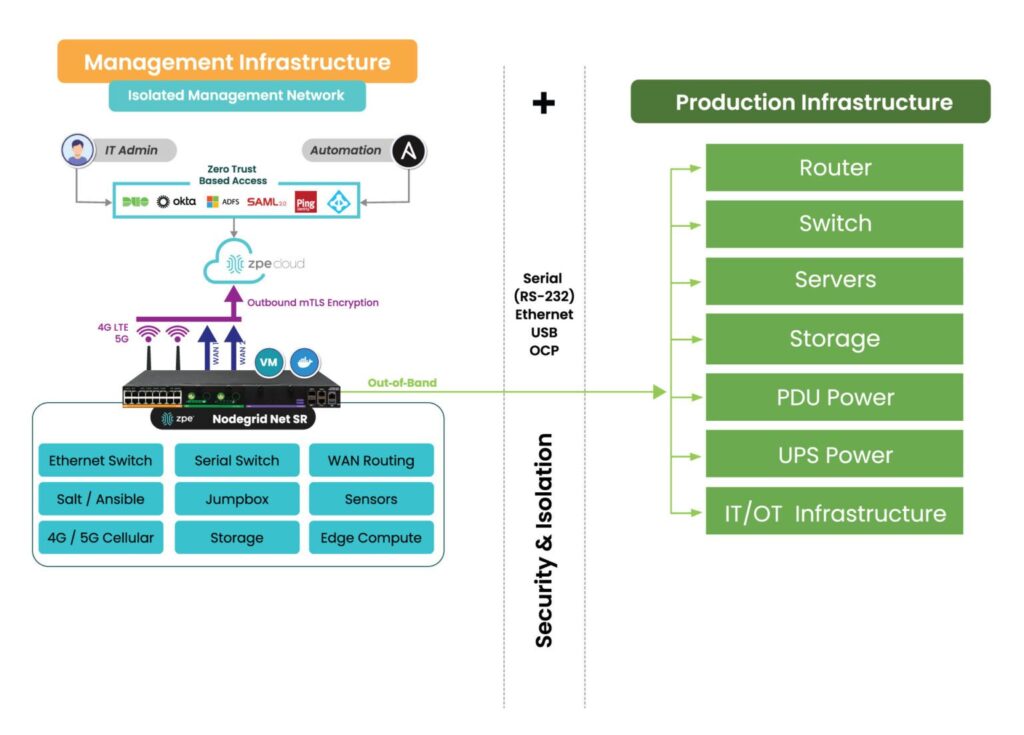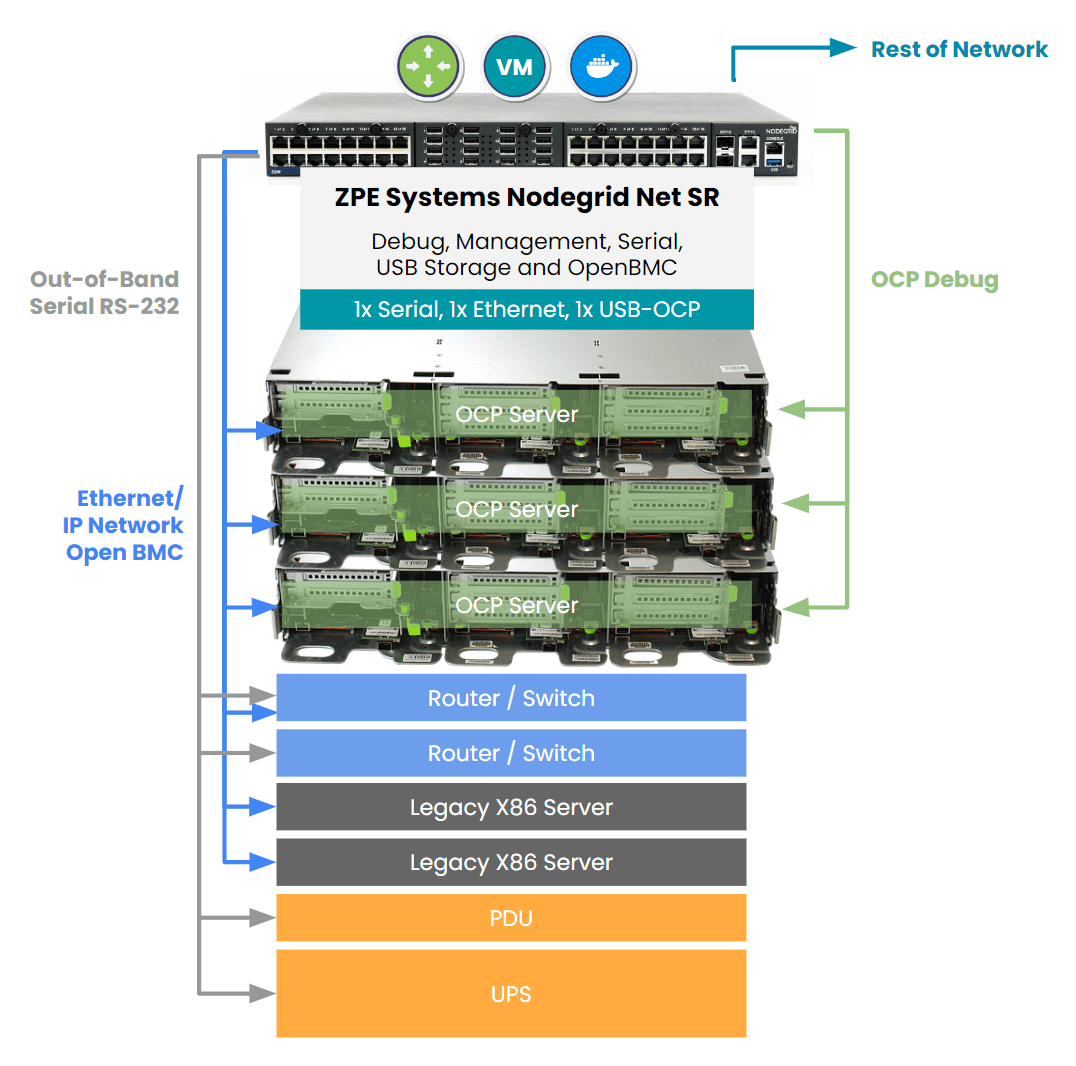
As artificial intelligence (AI) workloads grow more demanding, data centers are turning to specialized hardware like Open Compute Project (OCP) cards to meet their needs.
OCP cards, known for their open-source architecture and scalability, have become popular in AI-driven infrastructures due to their flexibility and cost-efficiency.
However, managing and troubleshooting these cards — especially in large-scale AI deployments — can pose significant challenges, particularly when it comes to accessing debug ports for diagnostics.
In this post, we’ll explore how isolated management infrastructure (IMI) offers a secure and reliable solution for accessing the debug ports of OCP cards used in AI systems. We’ll also discuss the importance of debugging in AI, the obstacles that come with large-scale deployments, and the role of IMI in overcoming those hurdles.
OCP Cards in AI: A High-Performance Solution
Open Compute Project cards have become central to AI and machine learning (ML) environments due to their powerful compute capabilities, scalability, and open-source design. These cards are often integrated into large data centers tasked with training AI models, running inference operations, and handling massive data streams.
With OCP cards, companies can optimize their data center hardware for specific workloads without being tied to proprietary solutions. This open-source approach allows for flexibility in AI infrastructure, but it also introduces challenges when managing such hardware at scale, especially when components fail or need troubleshooting.
The Importance of Debugging and Monitoring in AI
Debugging and monitoring are critical components of maintaining AI infrastructure. AI model training, in particular, places heavy demands on hardware, making performance consistency a key factor. Any malfunction at the hardware or software level needs to be identified and resolved quickly to avoid costly downtime.
One way to troubleshoot hardware-related problems is by accessing the debug ports of OCP cards. Debug ports provide administrators with direct access to diagnostics, enabling them to monitor system health and perform necessary repairs. However, accessing these ports can be difficult, particularly in AI deployments where hardware is distributed across large data centers.
The Challenges of Accessing Debug Ports in AI Deployments
In a large AI deployment, accessing the debug ports of individual OCP cards can present several obstacles:
- Physical Access: High-density data centers make it challenging for technicians to reach hardware components physically. In many cases, the OCP cards are housed in remote locations, requiring specialized tools for diagnostics.
- Security Risks: Allowing unrestricted access to debug ports can introduce security vulnerabilities. If these ports are not properly secured, cyber attackers could exploit them to gain control of critical infrastructure.
- Network Disruptions: During system failures, it can be difficult to access the network and troubleshoot the issue. When the primary network goes down, relying on that same network to manage hardware can delay recovery efforts and worsen the outage.
These challenges make it essential to adopt a secure, remote solution for managing OCP cards and their debug ports, especially when it comes to AI environments where any downtime can disrupt business-critical operations.
How Isolated Management Infrastructure (IMI) Works
Isolated management infrastructure (IMI) is a dedicated, separate network used exclusively for system management and maintenance. Unlike the primary network that handles day-to-day operations, the management network is isolated to ensure uninterrupted access to critical systems, even during outages or security incidents.
Image: Isolated Management Infrastructure physically separates management access from production assets.
By implementing IMI, administrators can remotely access the debug ports of OCP cards without affecting the main production network. This setup not only secures the debug ports but also ensures that troubleshooting can be done in real-time, even if the primary network is down.
Benefits of Using IMI for OCP Debug Ports:
- Secure, Controlled Access: Since the management network is isolated, it limits access to only authorized personnel. This reduces the chances of an attacker compromising critical hardware through exposed debug ports.
- Reduced Downtime: IMI enables administrators to access, troubleshoot, and repair systems quickly, minimizing downtime during failures or performance issues. Even during major network outages, IMI ensures out-of-band (OOB) access to the OCP cards’ debug ports.
- Lower Security Risks: By separating management traffic from regular operations, IMI reduces the attack surface. It becomes more difficult for hackers to use network vulnerabilities to gain unauthorized access to critical infrastructure.
Implementing Isolated Management for OCP Debug Access
To implement isolated management infrastructure for accessing the debug ports of OCP cards, follow these steps:
- Network Segmentation: Physically separate your management network from the production network. Ensure that management traffic is not routed through the same pathways used for regular operations.
- Use Out-of-Band Management Devices: Deploy dedicated OOB management hardware that allows for remote access and control of the OCP cards, even when the primary network is unavailable. This can include IPMI (Intelligent Platform Management Interface) or SSH (Secure Shell) for secure communication.
- Integrate with Monitoring Systems: Combine IMI with automated monitoring and alerting systems. This way, any anomaly detected in the AI environment will trigger a response, allowing administrators to quickly access the OCP card’s debug port for diagnostics.
Security Benefits of Isolated Management Infrastructure
In addition to improving accessibility, IMI enhances security across the board in AI environments. Here’s how:
- Limited Access Points: Isolating management infrastructure limits the number of entry points for attackers, significantly reducing the attack surface.
- Controlled User Access: Only authorized users can access the isolated network, meaning that internal threats and insider attacks are also mitigated.
- Compliance and Auditing: For industries with strict regulatory requirements, IMI provides clear documentation and control over system access, helping organizations meet compliance standards and pass security audits.
Real-World Example
Consider a scenario in a data center where an AI model’s training process experiences sudden instability. The system administrator, located remotely, uses IMI to securely access the OCP card’s debug port through an OOB management interface.
The problem is quickly diagnosed and resolved without needing physical access to the hardware, minimizing downtime and ensuring that the AI model’s training can continue uninterrupted.
Deploy IMI with Nodegrid to Strengthen AI Environments
As AI infrastructures grow, so do the risks and complexities associated with managing them. The October 2024 cyberattack on American Water, which impacted their operational technology and water distribution, highlights the need for robust, secure, and isolated management networks to avoid large-scale disruptions.
By integrating isolated management infrastructure into your AI data center, you can ensure quick access to critical systems like OCP devices, reduce the impact of system failures, and improve security. ZPE Systems’ Nodegrid is a Gen 3 out-of-band management platform that allows you to deploy IMI in your data center environment, and it’s the only out-of-band management built to manage OCP cards. It can integrate or directly host third-party applications for automation, security, and much more, consolidating an entire tech stack into a single, cost-efficient solution.
Schedule a demo to see how Nodegrid gives remote access to OCP cards and strengthens your AI deployments.


